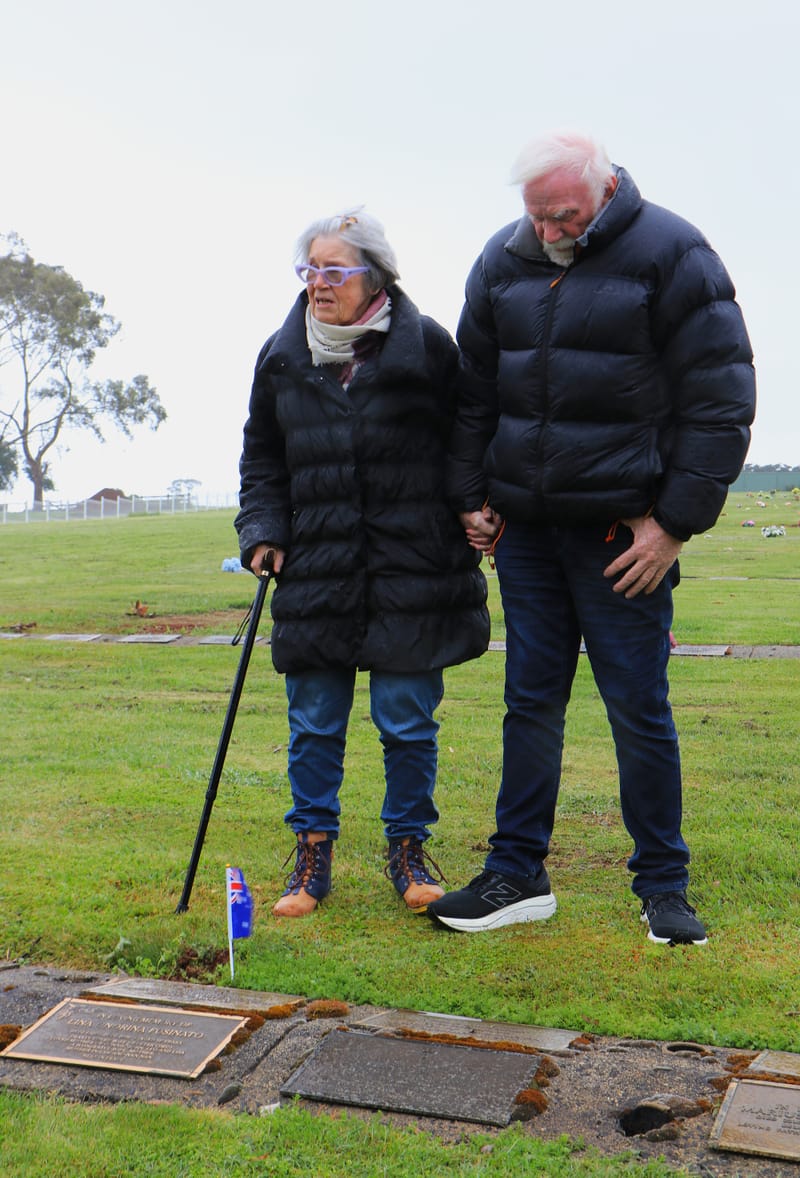The wreck of Tommy Norton
He was not named Tommy Norton, but that was what the people around the Gippsland Lakes called him. Officially, he was registered as PS T. Norton, but he also was listed as the PS Thomas Norton. The PS means he was a paddle steamer. The T means that...

He was not named Tommy Norton, but that was what the people around the Gippsland Lakes called him. Officially, he was registered as PS T. Norton, but he also was listed as the PS Thomas Norton. The PS means he was a paddle steamer. The T means that he was a tugboat.
Few people on the Lakes called him anything other than 'the Tommy Norton'.
He was, so far as one can tell from pictures of the boat, a rather ugly little ship with an oversized paddle wheel each side. He was carvel-built, which means the planks of his hull were fitted edge to edge rather than the overlapping planks of a clinker hull. He was steam-driven but he did have one mast, and he did seem to sit low in the water.
W and G White built Tommy at Williamstown in 1859. He was built to the order of Robert Dyason and Thomas Norton, after whom he was named. Norton was already a shipowner but this little ship was intended only to work on Port Phillip Bay.
She was just shy of 63 feet long, 12 feet and six inches wide and she drew only five feet and six inches. That shallow draft was to define Tommy's future, and that led, in turn to the sea claiming him.
It seems the owners were a little unsure of the right role for their new boat, and he worked on Port Phillip for five years, in a variety of roles. They had a contract with Peninsula and Orient, the famous P&O that were so much a part of our past, to ferry people and cargo from their steamships up to Queen's Wharf.
The very large steamship, SS Great Britain, came to Melbourne a few times and when she did she attracted much attention. In 1860 'Tommy' ran excursion trips out to this giant ship from Railway Pier, built in 1854 and later to be known as Station Pier. The trips were mot long and a fresh trip was run every hour. As an aside, the Great Britain captured the attention of the world, not just for her size, 322 feet LOA and weighing 3400 tons, but because she was built of iron instead of wood, and she had screws instead of paddles.
She also was popular because she brought so many migrants out to Australia. She really did play a significant part in our history and brought people to Melbourne several times carrying nearly 400 passengers.
It is sad that she finished up ignominiously, at least for a time. In 1881 she was converted to all-sail and three years later she was retired to the Falkland Islands where she filled various roles as a warehouse, a coal hulk and a quarantine ship, until she was scuttled in 1937.
Happily, she was raised by a British philanthropist, towed to Briston and restored. She now sits in a drydock there as part of the British Historical Fleet.
Getting back to the PS Thomas Norton, she had a 20 horsepower steam engine. That engine was built in Melbourne in 1858 or 1859, by John Sinclair. That means that only 20 years from Melbourne's beginnings we were able to plan, engineer and construct reliable steam engines for ships. The internal lakes shipping fleet was similarly proof of what our forebears could do, with, for example, Phillip McArdell's building of the steamer Enterprise at McArdell's Gap in 1857-58, at about the same time.
This little paddle steamer also filled an unusual role in rescuing people from floods that inundated much of South Melbourne.
In 1864 the Gippsland Lakes Navigation Company bought Tommy, still a newish little boat, and brought him to the Gippsland Lakes, based at Lakes Entrance. That entrance was still changeable and chancy at that time and sailing ships, particularly, were at risk. Tommy could bowl up and help out – for a fee.
Tommy had only one rival, another paddle steamer, the PS Lady of the Lake, and these two tugs were vitally important to the growing trade from the Lake round the Prom to Melbourne. They were still using the natural entrance, a place of swift currents and shifting sands. The small sailing ships of the 'Mosquito Fleet" would not take on the entrance without help. Even the small steamships of the time used one of the tugs. Very few took on the entrance without help.
Sometimes the vagaries of the entrance were such that it closed up altogether, until the rising waters of the lakes forced it open again – not always in the same place. Often it became too shallow to cross and the owners put Tommy to the task of running the passengers-and-cargo trip between the Latrobe Wharf, at the Swing Bridge south of Sale, and Bairnsdale, where the Mitchell River provided a really good channel up to the wharf. The Mitchell never varied much and that is why the famous silt jetties have survived and are something of a natural wonder.
Sadly, on October 26, 1877, in the evening somewhere between 6pm and 7pm, the PS 'Tommy Norton' lost the battle with the sea that was always part of braving the Entrance.
She piloted the SS Murray and then the schooner Nowra out to sea she was returning when she was caught by strong winds and large waves and driven side-on onto the western side of the Entrance. She was taking such a pounding that her boiler was torn from its mountings and it was then clear that the little ship, no longer than a cricket pitch, was doomed.
Aboard there were Captain McAlpine and Engineer Brown, three (I think) other crewmen and one unfortunate lady. Mrs Rigney, coming down from Sale on the SS Murray and transferring to the Tommy Norton to be taken ashore.
The six spent an uncomfortable and frightening night on the boat as the sea pounded the hull without mercy. At daylight McAlpine and Brown got ashore and 'borrowed' a boat they found to go back and rescue the others. There is little recorded about this deed, but it was an act of extreme heroism. No lives were lost, but a little ship that had become a much-loved part of life on the Lakes was forever gone.
Now we have on the Lakes a new ship that commemorates the little Tommy Norton. That is the Trailer Suction Hopper Dredge Tommy Norton, built specifically for the task of keeping the Entrance open and safe. She arrived on 1 September 2017 and does a sterling job.
Still, she is a long way from the little tugboat that first used the name.





